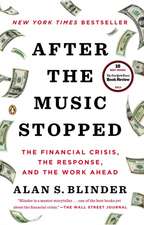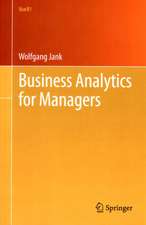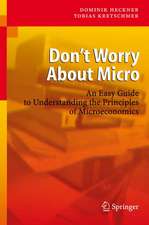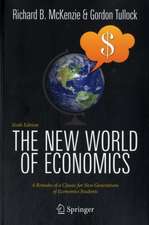Unemployment, Choice and Inequality
Autor Michael Sattingeren Limba Engleză Paperback – 6 dec 2011
Preț: 384.09 lei
Nou
Puncte Express: 576
Preț estimativ în valută:
73.49€ • 76.94$ • 60.81£
73.49€ • 76.94$ • 60.81£
Carte tipărită la comandă
Livrare economică 05-19 aprilie
Preluare comenzi: 021 569.72.76
Specificații
ISBN-13: 9783642705496
ISBN-10: 3642705499
Pagini: 196
Ilustrații: XIV, 178 p.
Dimensiuni: 170 x 244 x 15 mm
Greutate: 0.32 kg
Ediția:Softcover reprint of the original 1st ed. 1985
Editura: Springer Berlin, Heidelberg
Colecția Springer
Locul publicării:Berlin, Heidelberg, Germany
ISBN-10: 3642705499
Pagini: 196
Ilustrații: XIV, 178 p.
Dimensiuni: 170 x 244 x 15 mm
Greutate: 0.32 kg
Ediția:Softcover reprint of the original 1st ed. 1985
Editura: Springer Berlin, Heidelberg
Colecția Springer
Locul publicării:Berlin, Heidelberg, Germany
Public țintă
ResearchCuprins
1. Introduction.- 1. Subject Matter.- 2. Previous Work.- 3. Choice in Labor Markets.- 4. Outline of Remaining Chapters.- 2. Search in Labor Markets.- 1. Introduction.- 2. Worker Search Behavior.- 3. Impacts of Labor Market Conditions.- 4. Extensions.- 5. Distributions of Workers and Jobs.- 6. Behavior of the firm.- 7. Summary.- 3. The Valuation of Unemployment.- 1. Introduction.- 2. Alternative Valuations.- 3. Previous Estimates.- 4. Direct Estimates.- 5. Aggregate Approach.- 6. Labor Force Participation Approach.- 7. Cross-Section Estimates.- 8. General Conclusions.- Appendix: Data Sources.- 4. The Distribution of Employment.- 1. Introduction.- 2. Previous Work.- 3. Sources of Inequality.- 4. Distribution of the Time Spent Unemployed.- 5. Employment Inequality.- 6. Heterogeneous Transition Rates.- 7. Conclusions.- 5. The Distribution of Wage Rates.- 1. Introduction.- 2. Truncated Wage Offer Distributions.- 3. Accepted Wage Distribution.- 4. The Contribution of Choice.- 5. The Source of Wage Rate Dispersion.- 6. Summary.- 6. Inequality.- 1. Introduction.- 2. Statistical Relations.- 3. Observed Earnings Inequality.- 4. The Role of Choice and Uncertain Outcomes.- 5. Unemployment-Compensated Wage Rates.- 6. Inequality by Source.- 7. Summary.- 7. The Operation of Labor Markets.- 1. Introduction.- 2. Dual Labor Markets.- 3. The Business Cycle.- 4. Wage Rigidity, Wage Resistance and the Aggregate Supply Curve.- 8. Chronic Underemployment and Regression Towards the Mean.- 1. Introduction.- 2. Advantageous Trades and the Economic Role of Unemployment.- 3. Definition of Underemployment.- 4. Tests for Underemployment.- 5. Regression Towards the Mean.- 6. Chronic Underemployment.- 7. Comparison with Previous Theories.- 9. Summary.- 1. Ten Theoretical Conclusions.- 2. Ten EmpiricalResults.- 3. Six Remaining Tasks.- 4. Three New Directions.- References.- Author Index.










